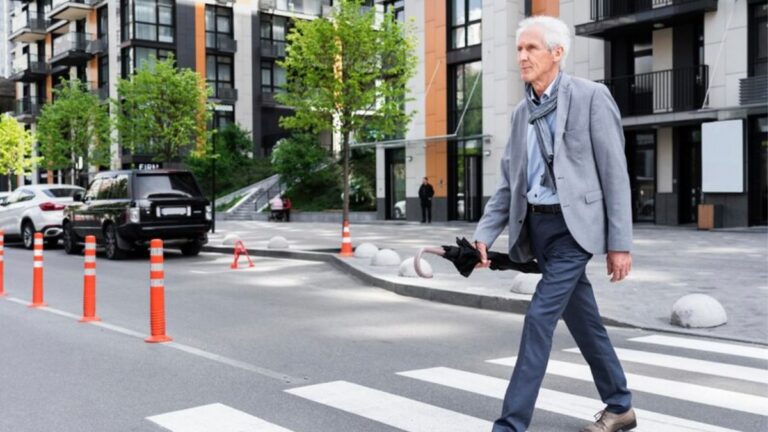Introduction
Urban environments are bustling with activity, making it essential for drivers and pedestrians to prioritize safety. As cities grow and evolve, the number of pedestrians navigating busy streets continues to increase. In such vibrant environments, understanding how to move safely is crucial. In areas like Council Bluffs, having access to resources such as pedestrian accident attorneys in Council Bluffs can be invaluable. These professionals guide locals on legal rights and safe practices, providing support when navigating pedestrian safety challenges.
Rising foot traffic demands both pedestrians and drivers be vigilant, as urban areas can sometimes be a chaotic blend of activities and distractions. Each party must adhere to safety measures that minimize accident risks. Meanwhile, public awareness and modern technology are pivotal in bolstering pedestrian safety in these increasingly crowded settings.
The Rise of Urban Pedestrian Traffic
The allure of urban centers often brings an influx of pedestrians eager to explore vibrant hubs rich in culture, commerce and community. However, with dense populations come the challenges of navigating crowded streets where the hustle and bustle can sometimes lead to confusion and peril. Pedestrians face various risks daily, contending with vehicles, cyclists and fellow walkers in these fast-paced environments. As cities grow, it’s imperative to balance accessibility and safety to accommodate this rising foot traffic.
Common Causes of Pedestrian Accidents
Accidents often occur due to distractions with drivers and pedestrians guilty of averting their attention from their immediate surroundings. Drivers engrossed in their devices or multitasking and pedestrians absorbed in their mobile screens contribute to unnecessary collisions and injuries. Simple measures such as putting devices away while moving and being aware of crosswalk signals can cultivate a more secure environment. Ensuring everyone remains vigilant and respectful of one another can significantly reduce accident rates, facilitating safer interactions on the streets.
Effective Pedestrian Safety Measures
Cities worldwide recognize the need to protect pedestrians through various safety interventions such as crosswalks, traffic signals, speed bumps and pedestrian-only zones. These actions aim to make the environment frictionless and secure for every driver. The National Highway Traffic Safety Administration claims these measures significantly improve pedestrian safety when accepted and applied appropriately. Urban planners continually innovate to accommodate pedestrian needs, ensuring that systems like crosswalks serve as effective safety nets for all.
The Role of Infrastructure in Pedestrian Safety
Proper infrastructure is imperative for pedestrian safety. As cities strive for intelligent growth, infrastructure plays a pivotal role in ensuring pedestrians can navigate freely and safely. Bright city designs incorporate well-lit sidewalks, sufficiently wide pedestrian paths and designated zones that inherently discourage vehicular traffic. These infrastructural features help mitigate risks and promote safety by design. Urban planners emphasize creating environments encouraging walking by championing safety and accessibility, thereby nurturing thriving, walkable communities.
Technology’s Influence on Urban Pedestrian Safety
Innovations such as pedestrian detection systems exemplify technology’s transformative potential in enhancing safety. The automotive industry has made significant strides by incorporating advanced features such as automatic braking, pedestrian alerts, and adaptive headlights that prove invaluable in avoiding pedestrian-related accidents. These technological advances anticipate and actively prevent potential hazards, offering promising new layers of protection on our roads. Integrating technology into urban safety strategies underscores its role in crafting more secure urban pedestrian environments.
Importance of Public Awareness Campaigns
Educating the public is one of the most efficient tools for enhancing pedestrian safety. Awareness campaigns, tailored to inform communities about safe practices, emphasize the dangers of inattentive walking and driving. Such initiatives are pivotal in creating a safety culture that pedestrians and drivers respect. Programs spearheaded by organizations like the Centers for Disease Control and Prevention prioritize safety education, highlighting the critical nature of informed road use and reducing accidents through knowledge dissemination.
Practical Tips for Pedestrians and Drivers
Implementing practical safety tips can ensure that pedestrians and drivers coexist harmoniously. Pedestrians should prioritize making themselves visible, such as wearing bright clothing at night and always using designated crossing areas. They should avoid distractions and remain alert to their surroundings. On the other hand, drivers must stay attentive, watch for pedestrians, and adjust speeds in crowded urban areas. By fostering mutual respect and awareness, both parties contribute to creating and maintaining safer urban streets for all those who traverse them.

